Eslam Mohamed
ST-DETR: Spatio-Temporal Object Traces Attention Detection Transformer
Jul 24, 2021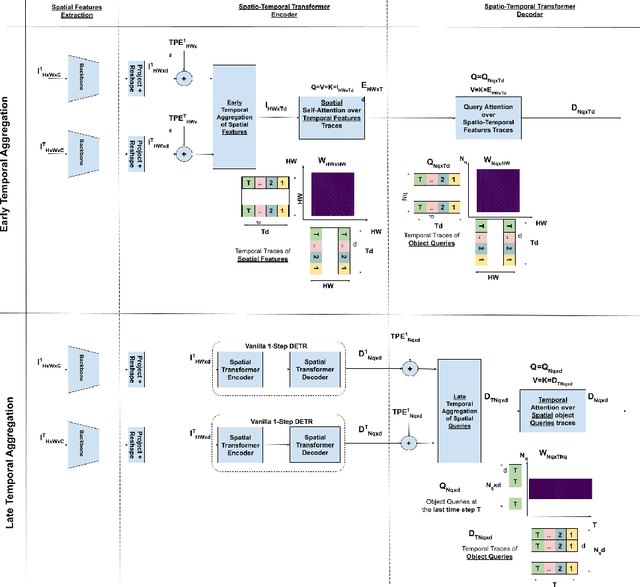



Abstract:We propose ST-DETR, a Spatio-Temporal Transformer-based architecture for object detection from a sequence of temporal frames. We treat the temporal frames as sequences in both space and time and employ the full attention mechanisms to take advantage of the features correlations over both dimensions. This treatment enables us to deal with frames sequence as temporal object features traces over every location in the space. We explore two possible approaches; the early spatial features aggregation over the temporal dimension, and the late temporal aggregation of object query spatial features. Moreover, we propose a novel Temporal Positional Embedding technique to encode the time sequence information. To evaluate our approach, we choose the Moving Object Detection (MOD)task, since it is a perfect candidate to showcase the importance of the temporal dimension. Results show a significant 5% mAP improvement on the KITTI MOD dataset over the 1-step spatial baseline.
MODETR: Moving Object Detection with Transformers
Jun 21, 2021



Abstract:Moving Object Detection (MOD) is a crucial task for the Autonomous Driving pipeline. MOD is usually handled via 2-stream convolutional architectures that incorporates both appearance and motion cues, without considering the inter-relations between the spatial or motion features. In this paper, we tackle this problem through multi-head attention mechanisms, both across the spatial and motion streams. We propose MODETR; a Moving Object DEtection TRansformer network, comprised of multi-stream transformer encoders for both spatial and motion modalities, and an object transformer decoder that produces the moving objects bounding boxes using set predictions. The whole architecture is trained end-to-end using bi-partite loss. Several methods of incorporating motion cues with the Transformer model are explored, including two-stream RGB and Optical Flow (OF) methods, and multi-stream architectures that take advantage of sequence information. To incorporate the temporal information, we propose a new Temporal Positional Encoding (TPE) approach to extend the Spatial Positional Encoding(SPE) in DETR. We explore two architectural choices for that, balancing between speed and time. To evaluate the our network, we perform the MOD task on the KITTI MOD [6] data set. Results show significant 5% mAP of the Transformer network for MOD over the state-of-the art methods. Moreover, the proposed TPE encoding provides 10% mAP improvement over the SPE baseline.
Spatio-Temporal Multi-Task Learning Transformer for Joint Moving Object Detection and Segmentation
Jun 21, 2021



Abstract:Moving objects have special importance for Autonomous Driving tasks. Detecting moving objects can be posed as Moving Object Segmentation, by segmenting the object pixels, or Moving Object Detection, by generating a bounding box for the moving targets. In this paper, we present a Multi-Task Learning architecture, based on Transformers, to jointly perform both tasks through one network. Due to the importance of the motion features to the task, the whole setup is based on a Spatio-Temporal aggregation. We evaluate the performance of the individual tasks architecture versus the MTL setup, both with early shared encoders, and late shared encoder-decoder transformers. For the latter, we present a novel joint tasks query decoder transformer, that enables us to have tasks dedicated heads out of the shared model. To evaluate our approach, we use the KITTI MOD [29] data set. Results show1.5% mAP improvement for Moving Object Detection, and 2%IoU improvement for Moving Object Segmentation, over the individual tasks networks.
INSTA-YOLO: Real-Time Instance Segmentation
Feb 12, 2021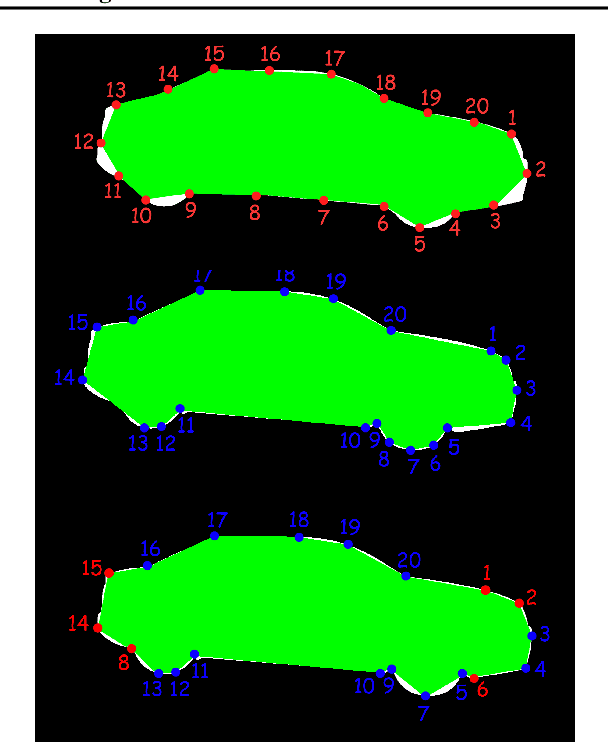
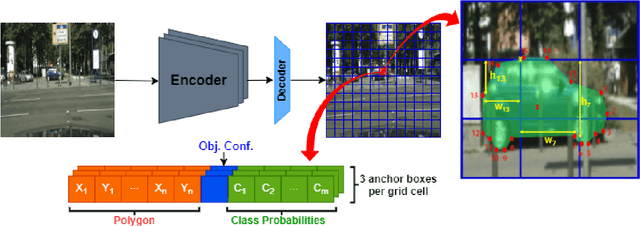
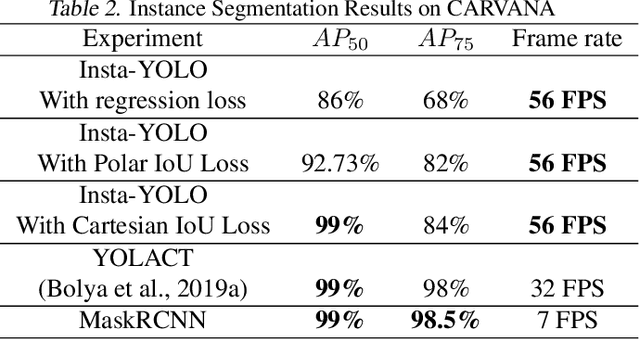
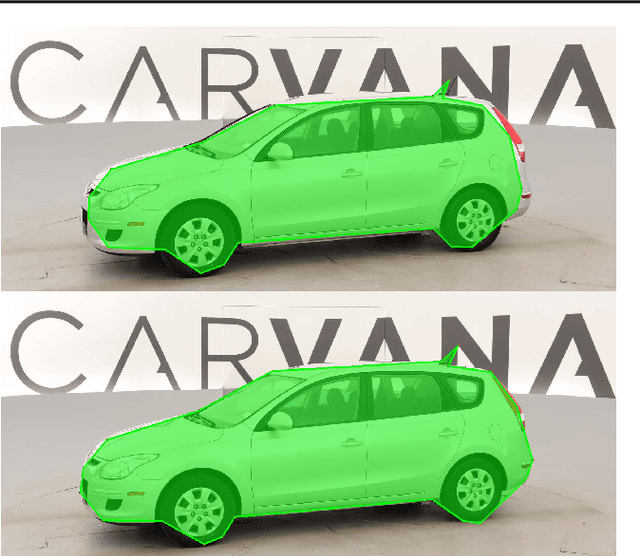
Abstract:Instance segmentation has gained recently huge attention in various computer vision applications. It aims at providing different IDs to different objects of the scene, even if they belong to the same class. Instance segmentation is usually performed as a two-stage pipeline. First, an object is detected, then semantic segmentation within the detected box area is performed which involves costly up-sampling. In this paper, we propose Insta-YOLO, a novel one-stage end-to-end deep learning model for real-time instance segmentation. Instead of pixel-wise prediction, our model predicts instances as object contours represented by 2D points in Cartesian space. We evaluate our model on three datasets, namely, Carvana,Cityscapes and Airbus. We compare our results to the state-of-the-art models for instance segmentation. The results show our model achieves competitive accuracy in terms of mAP at twice the speed on GTX-1080 GPU.
Generalized Object Detection on Fisheye Cameras for Autonomous Driving: Dataset, Representations and Baseline
Dec 03, 2020
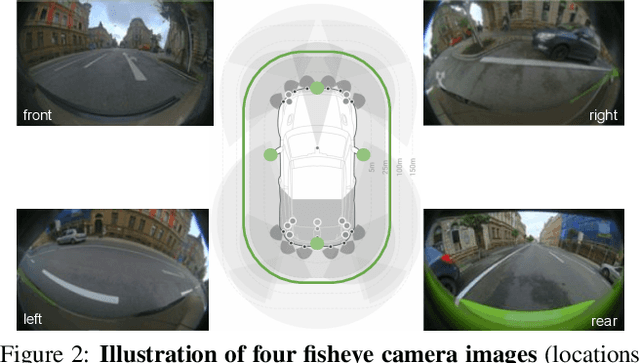
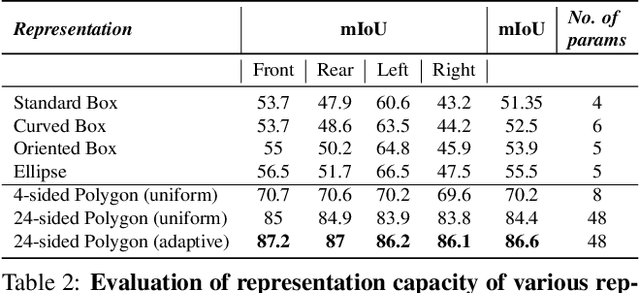
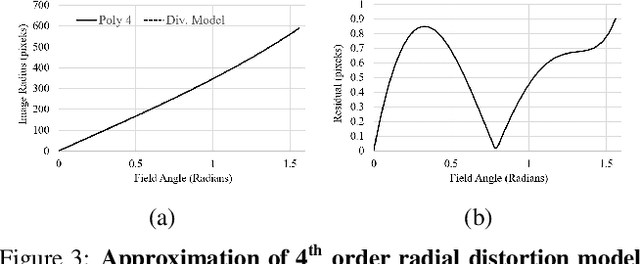
Abstract:Object detection is a comprehensively studied problem in autonomous driving. However, it has been relatively less explored in the case of fisheye cameras. The standard bounding box fails in fisheye cameras due to the strong radial distortion, particularly in the image's periphery. We explore better representations like oriented bounding box, ellipse, and generic polygon for object detection in fisheye images in this work. We use the IoU metric to compare these representations using accurate instance segmentation ground truth. We design a novel curved bounding box model that has optimal properties for fisheye distortion models. We also design a curvature adaptive perimeter sampling method for obtaining polygon vertices, improving relative mAP score by 4.9% compared to uniform sampling. Overall, the proposed polygon model improves mIoU relative accuracy by 40.3%. It is the first detailed study on object detection on fisheye cameras for autonomous driving scenarios to the best of our knowledge. The dataset comprising of 10,000 images along with all the object representations ground truth will be made public to encourage further research. We summarize our work in a short video with qualitative results at https://youtu.be/iLkOzvJpL-A.
InstanceMotSeg: Real-time Instance Motion Segmentation for Autonomous Driving
Aug 16, 2020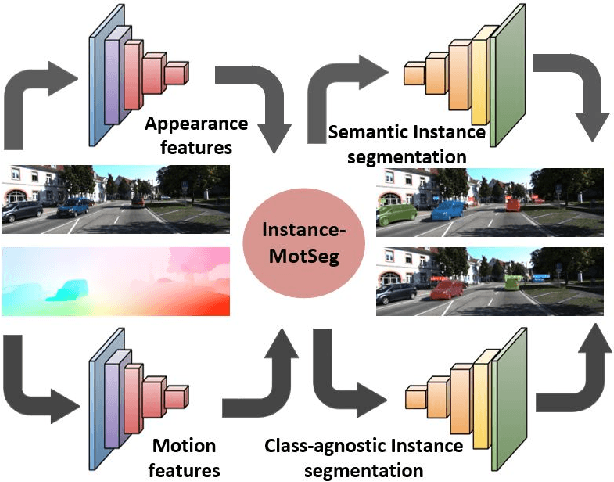

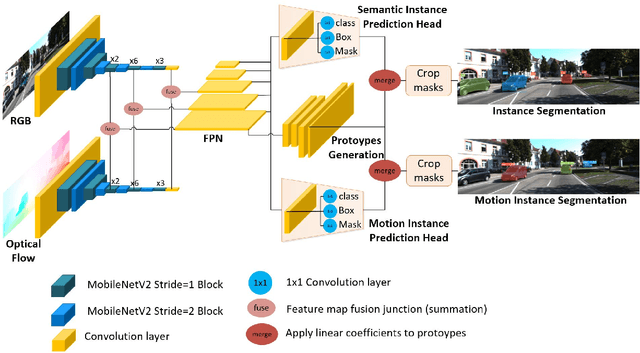

Abstract:Moving object segmentation is a crucial task for autonomous vehicles as it can be used to segment objects in a class agnostic manner based on its motion cues. It will enable the detection of objects unseen during training (e.g., moose or a construction truck) generically based on their motion. Although pixel-wise motion segmentation has been studied in the literature, it is not dealt with at instance level, which would help separate connected segments of moving objects leading to better trajectory planning. In this paper, we proposed a motion-based instance segmentation task and created a new annotated dataset based on KITTI, which will be released publicly. We make use of the YOLACT model to solve the instance motion segmentation network by feeding inflow and image as input and instance motion masks as output. We extend it to a multi-task model that learns semantic and motion instance segmentation in a computationally efficient manner. Our model is based on sharing a prototype generation network between the two tasks and learning separate prototype coefficients per task. To obtain real-time performance, we study different efficient encoders and obtain 39 fps on a Titan Xp GPU using MobileNetV2 with an improvement of 10% mAP relative to the baseline. A video demonstration of our work is available in https://youtu.be/CWGZibugD9g.
 Add to Chrome
Add to Chrome Add to Firefox
Add to Firefox Add to Edge
Add to Edge